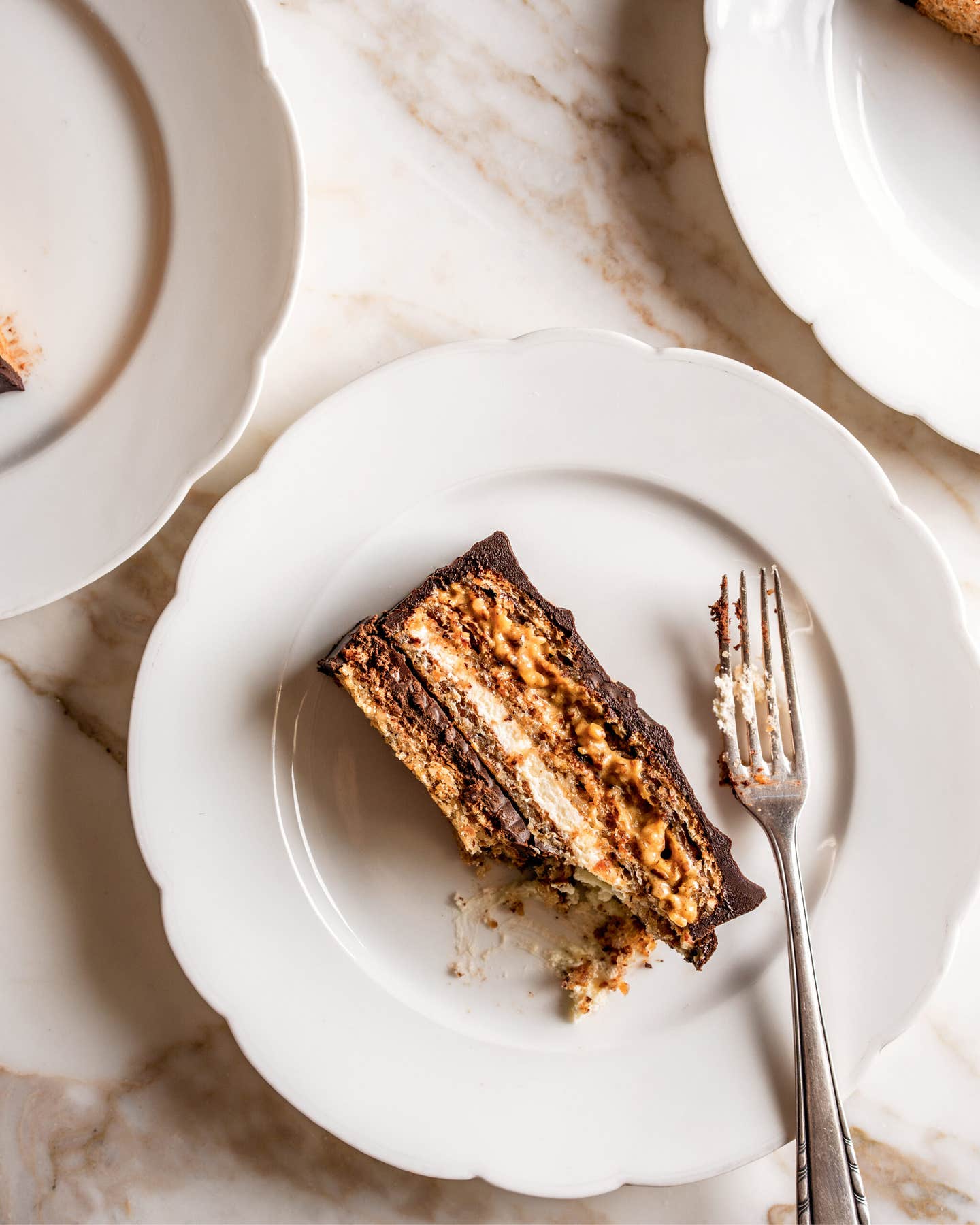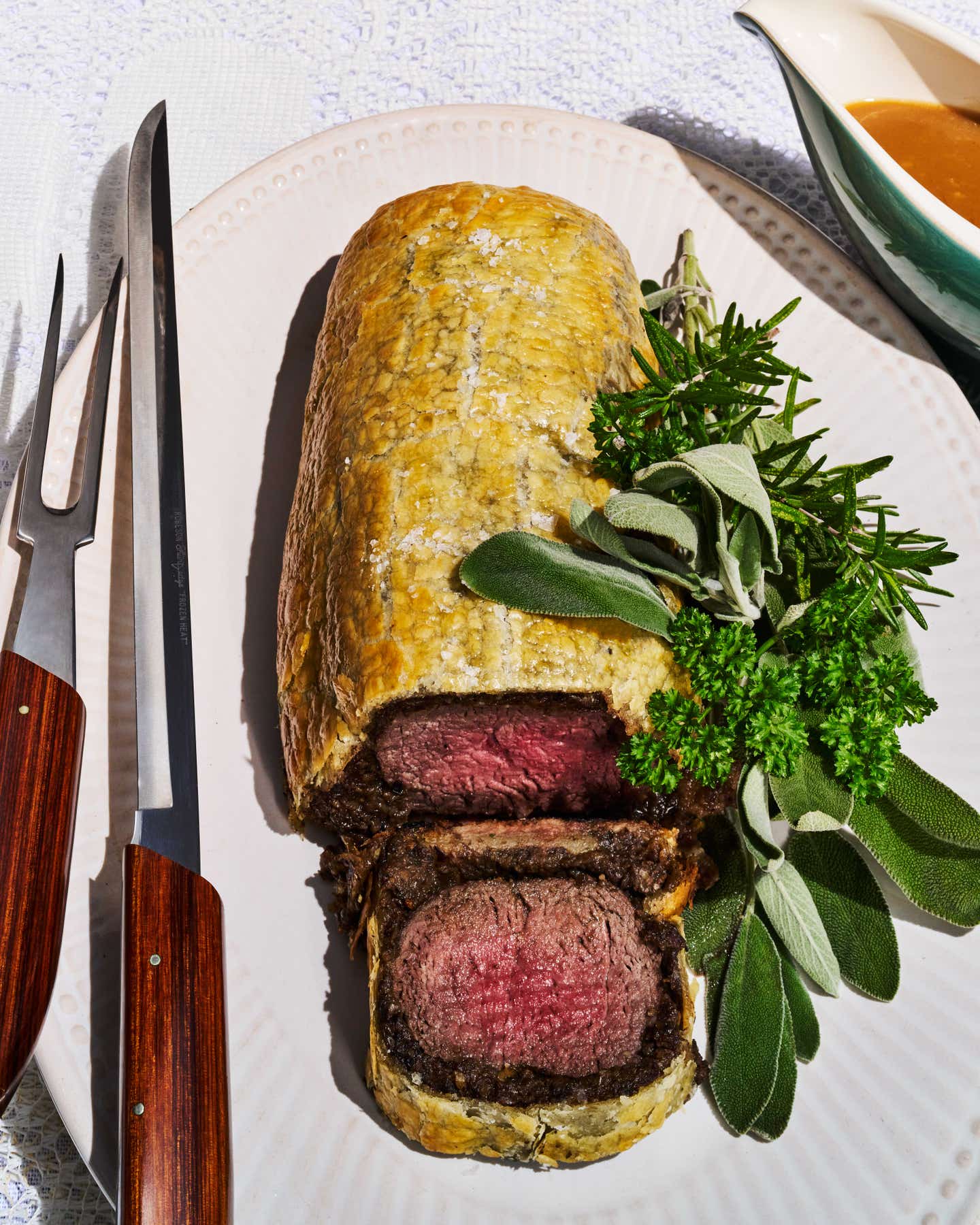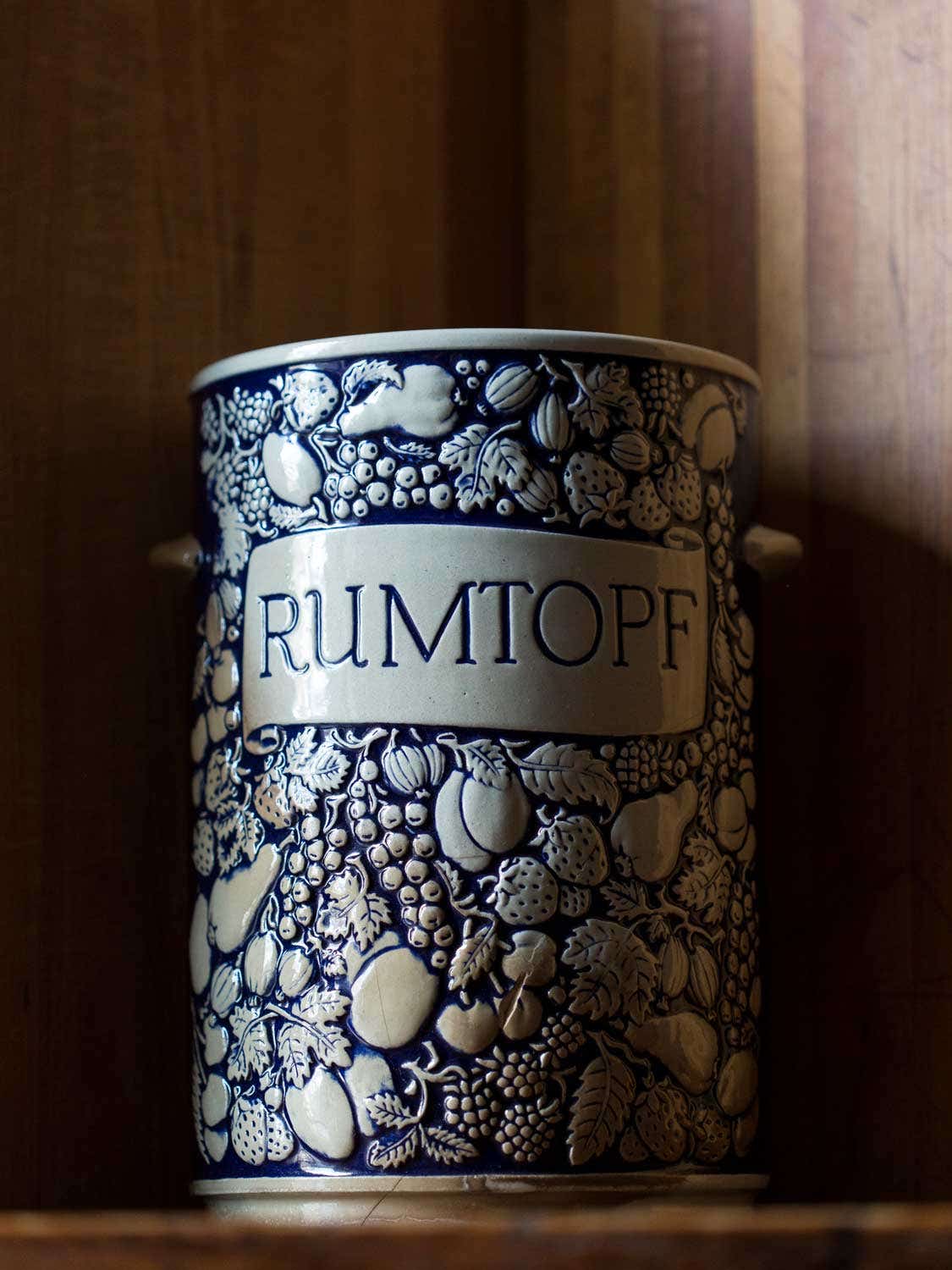
Go Make Rumtopf, the Boozy German Fruit Preserve That’ll Make Your Grandparents Proud
Capture the best tastes and memories of the year with buckets of rum
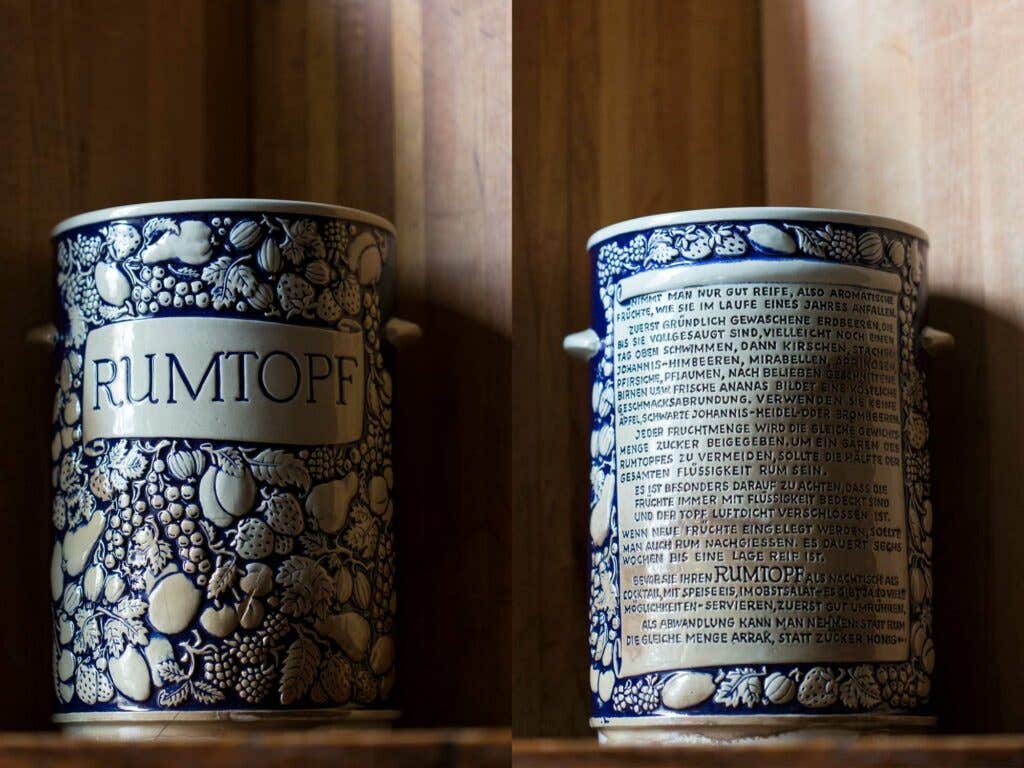
The idea of rumtopf is this: Take your best fruit—your superlative strawberries and premium peaches—and don't eat them. Instead, drown them in rum and sugar in a towering ceramic crock and forget about them for a while.
Begin filling your rumtopf crock in midsummer, when perky strawberries first give off their perfume. Carry on with raspberries, and later apricots, layering the jar with more rum and sugar at every addition. As the weather begins to cool and plums reach their peak, stir them in. Rumtopf can and should be consumed year-round, but it's traditionally a holiday thing. So when sweater weather arrives, you're close. In go apples and pears, and by December you have a dark, lustrous elixir to sip from sherry glasses and rum-soaked fruit to spoon over spice cake—a whole sweet year concentrated into a single swig.
At least, this is what you do if you're my grandmother, Dorothy Falkowitz, who began a batch of rumtopf in 1975 and cultivated it for over 20 years. With rumtopf, which translates from the German to "rum pot," you don't simply preserve fruit for a season. You preserve it forever. Do it right and your crock never empties out; as the seasons progress, so do your additions of fruit, this year's nectarines mingling with the whispers of decade-old grapes.
Dorothy, a New York butcher's daughter, had some German blood in her. Polish too, and Ukrainian, and some strains we're not so sure about. She was also an exactingly observant Jew who kept a (nearly) strict kosher home with plates segregated for meat and dairy. (A third set reserved for Chinese spareribs and other forbidden delights sat in purgatory down the hall.)
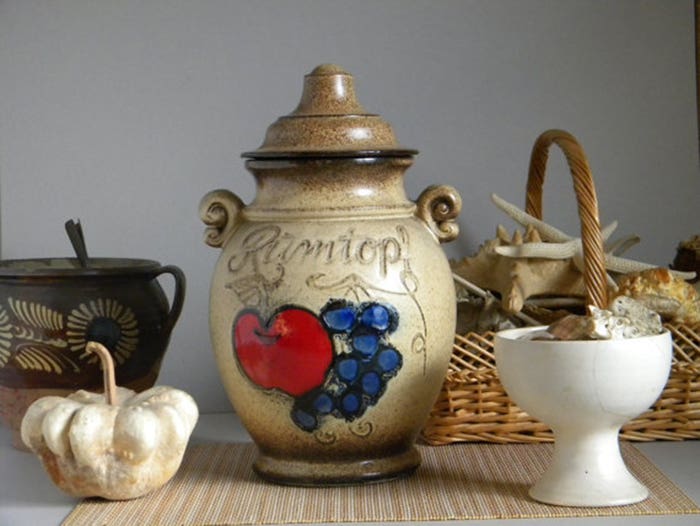
There is a word in Ashkenazi Hebrew, tznius, that means modesty but also connotes a kind of plain, understated dress and behavior that my people are supposed to find admirable. Dot Falkowitz was not tznius. The American-born child of blue-collar but upwardly mobile Jewish immigrants, she always had a taste for the exotic. Her rumtopf crock was only one such affectation; no one remembers where she first got it, but I'm placing bets on Saks or Bloomingdale's more than any Mitteleuropean ancestry. The family is more clear on her other flights of fancy, like that time she dragged my father all over Queens in search of the squash blossoms and quail she absolutely required for a little dinner of 35 relatives and friends. Or the bourbon she slipped into some matzo ball soup on a whim, following a course of gefilte fish made from whitefish and cod that had been swimming in her bathtub earlier that day.
Dorothy died in 2007, but her rumtopf lived on. When my father and I unearthed it in a garage a few years later, the crock was still half-full. Granted, an inch-thick layer of mold had subsumed the neglected fruit, but the message from beyond the grave was perfectly clear: This is not finished.
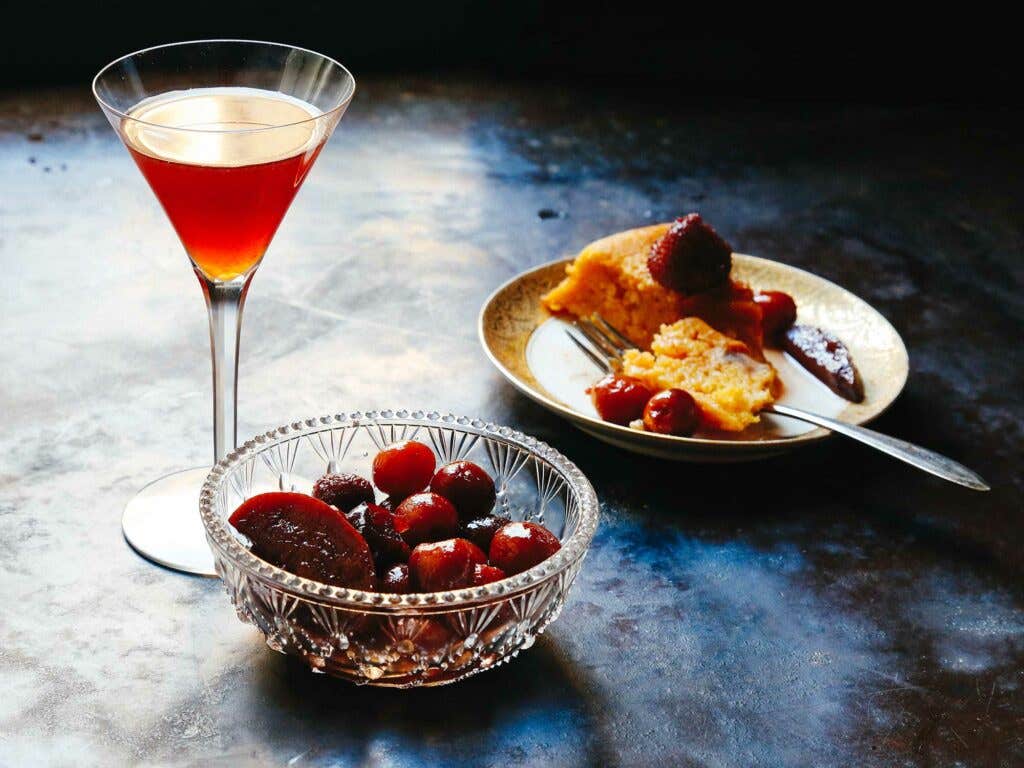
In truth, Dorothy and I weren't very close. Members of Clan Falkowitz lead rich inner lives but keep mostly to ourselves. While we shared an affinity for verboten spareribs and hand-painted glassware, our greatest connection was that we were often more comfortable feeding friends and family than talking to them. I know more about her from anecdotes shared around the dinner table than any personal relationship. I had never tasted her rumtopf, and in its found state there was no way to sample it. So if I were to re-create it, I'd have to start from scratch. Which is how these things go. There's the past you know and the past you make up to fill in the gaps.
The beauty of rumtopf is its flexibility—there's no set recipe to follow, only what the seasons provide. Etched on the back of Dorothy's crock in German are some recommended fruits and simple rules: Every time you add more fruit, add more sugar; keep it all completely submerged with rum, weighed down with a plate if you have to, and cover it tight. To read the instructions, Dorothy relied on her scholar son, my uncle, who learned the language to keep abreast of the latest research on ancient Assyriology. I got by with Google Translate.
After half an hour hosing out the crock, inspecting the remnants of ancient raisins for clues, and scrubbing the walls with bleach, I started asking my father about Dorothy. He unspooled stories of her rumtopf, the Great Squash Blossom Hunt of '86, and her other acts of rebellion against quaint suburban Jewish life.
When we finished with this batch of legends, we started talking about what made the woman tick. Why she took up with this goyishe practice of rum-preserving fruit in the first place. And how she justified eating those spareribs while cooking Shabbat dinner. "It was her way of bridging the gap," my father said, a way for a child of strangers in a strange land to keep a grip on the past while looking to the future.
My rumtopf is aging nicely now. Does it taste like Dot's? No idea. But it's dark, plummy, and strong enough to put hair on my chest (the Falkowitz family's measure for anything good). And if you're just starting your rumtopf now, don't worry about following a recipe too closely, or looking for early summer berries in November. The key to a good rum pot isn't the particulars of the fruit you choose. It's the time it takes for everything to commingle and surrender its individual flavors to the greater whole. And the pleasure of topping it off forever.
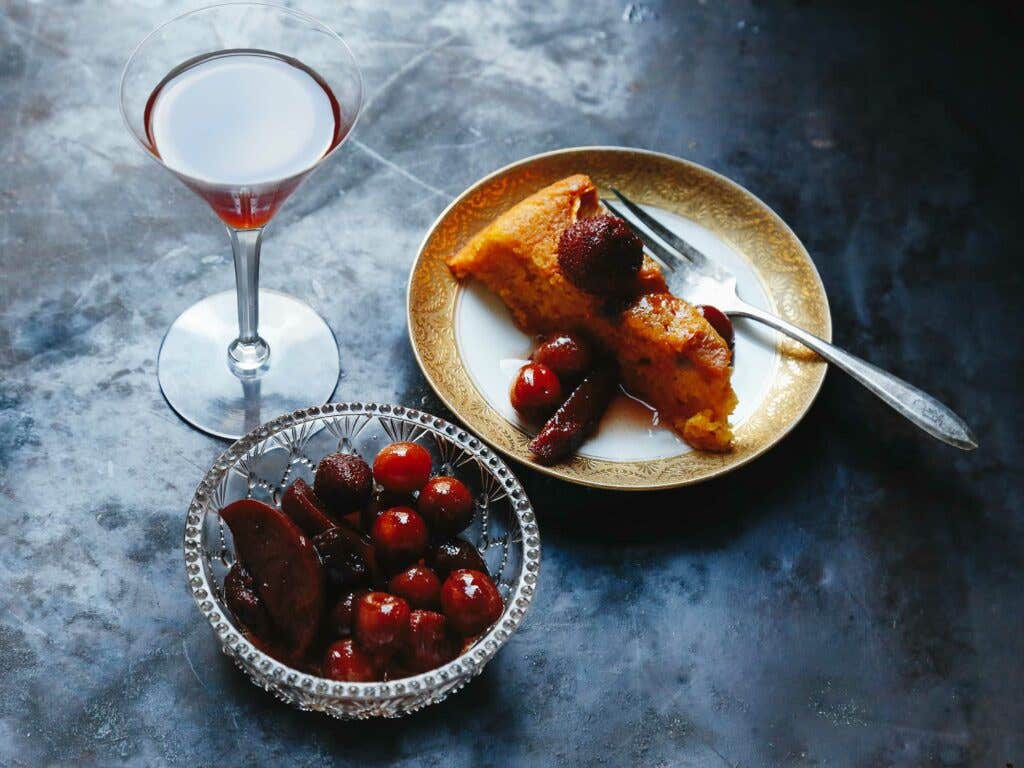
Keep Reading
Continue to Next Story
